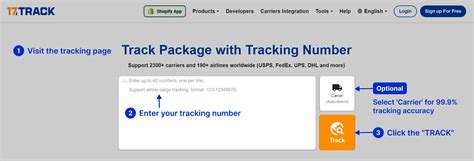The Synergy of Sweat and Savings: Why Combine Your Goals?
In a world where both physical well-being and financial stability are paramount, it often feels like you have to choose between investing in your health or padding your savings. The good news? You don’t. By adopting a unified approach to budgeting, you can create a powerful synergy that propels you towards both your fitness and financial aspirations simultaneously. This isn’t about deprivation; it’s about smart allocation and intentional living.
When you align your fitness and financial goals, the discipline required for one often reinforces the other. For instance, cooking healthy meals at home (a fitness-friendly habit) can significantly reduce your takeout expenses (a financial win). Similarly, walking or cycling instead of driving improves your cardiovascular health and saves money on fuel.

Step 1: Define Your SMART Fitness and Financial Goals
Before you can budget effectively, you need a clear destination. Apply the SMART framework to both sets of goals:
- Specific: Instead of “get fit,” aim for “run a 5k in under 30 minutes” or “lift X weight.” For finance, instead of “save money,” aim for “save $5,000 for an emergency fund.”
- Measurable: How will you track progress? (e.g., daily steps, weekly savings contribution).
- Achievable: Set realistic goals that challenge but don’t overwhelm you.
- Relevant: Ensure these goals truly matter to you and align with your values.
- Time-bound: Give yourself a deadline (e.g., by the end of the year, within six months).
Having clear, quantified goals for both areas will provide the motivation and direction needed to make your budget work for you.

Step 2: Conduct a Financial Health Check-up
You can’t plan your journey without knowing your starting point. Track every dollar that comes in and goes out for at least a month. Use budgeting apps, spreadsheets, or even a simple notebook. Categorize your expenses into fixed (rent, loan payments) and variable (groceries, entertainment). This exercise will reveal exactly where your money is going and highlight areas where you might be overspending, which could be reallocated towards your fitness and financial goals.
Step 3: Craft Your Integrated Budget Plan
Now, it’s time to build your budget, intentionally allocating funds for both aspects of your life. Prioritize needs (housing, utilities, essential food) first, then dedicate specific portions of your income to your goals.
- Fitness Allocation: Decide how much you can realistically spend on gym memberships, home equipment, healthy groceries, activewear, or race fees. Look for cost-effective solutions: free bodyweight workouts, outdoor activities, community sports, or budget-friendly healthy meal prep.
- Financial Allocation: Dedicate a fixed amount to your emergency fund, debt repayment, investments, or retirement savings. Consider setting up automatic transfers to ensure consistency.
- Trim the Fat: Identify non-essential spending that doesn’t contribute to either your fitness or financial goals. This might mean reducing dining out, cutting unused subscriptions, or finding cheaper entertainment options.

Step 4: Implement Smart Spending and Saving Strategies
Execution is key. Here are practical strategies to maximize your budget for dual success:
- Meal Prep Mastery: Plan and cook your meals for the week. This not only ensures healthy eating but also significantly reduces food waste and impulse purchases, saving you money.
- Cost-Effective Fitness: Explore free options like running, hiking, bodyweight exercises, or free online workout videos. If a gym is a must, look for off-peak deals or consider a home gym setup over time.
- Automate Your Savings: Set up automatic transfers from your checking to your savings or investment accounts immediately after payday. Treat these contributions as non-negotiable bills.
- Track Progress Regularly: Use budgeting apps to monitor your spending against your plan. For fitness, use wearables or workout journals. Seeing progress in both areas is incredibly motivating.

Step 5: Review, Adjust, and Stay Accountable
A budget isn’t a static document; it’s a living tool. Life changes, and so should your budget. Schedule a monthly or quarterly review to assess your progress, celebrate wins, and make adjustments as needed. Did you hit your savings target? Did you stick to your workout routine? If not, understand why and recalibrate. Share your goals with a trusted friend or family member for added accountability.

Conclusion
Effectively budgeting your money to hit both fitness and financial goals simultaneously is a powerful commitment to your overall well-being. It demands discipline, planning, and consistent effort, but the rewards are immense. By setting clear goals, understanding your current financial landscape, crafting an integrated budget, and consistently tracking your progress, you can build a life that is rich in both health and wealth. Start small, stay consistent, and watch as your intentional choices transform your future.




